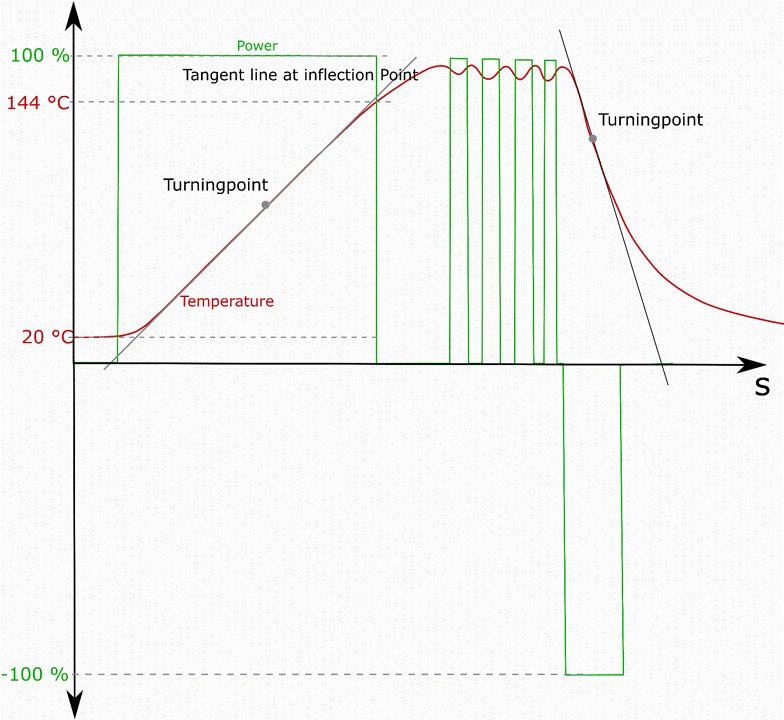Self-optimization
After the library is included and all parameters are predefined, a self-optimization should be performed. The following parameters are relevant for this purpose:
- TuneCooling: If the zone has cooling (UseCooling must be TRUE and the output type must be set OutputSel_H), separate parameters can be determined for the cooling.
- Tune_IdleLoad: A TRUE triggers the determination of the pre-control part during self-optimization.
- TuneY: Specifies the amount of heating power output during self-optimization.
- TuneEnd: After TuneEnd/100* setpoint the output is switched off and the overshoot is determined. It should be guaranteed that after overshooting the actual temperature is below the set temperature.
Self-optimization is started via the signal ST_TcPfw_TempMparamFromHmi_Itf[...].Autotune. Then ST_TcPfw_TempToHmi_Itf[...].TuningActive becomes TRUE. If this is not the case, it was aborted with error. After the autotune was successful, this is indicated in ST_TcPfw_TempToHmi_Itf[...].TuningDone via a TRUE. Self-optimization can be aborted at any time by setting ST_TcPfw_TempMparamFromHmi_Itf[...].Autotune to FALSE.
Prerequisite for successful self-optimization is that the controller is active (ST_TcPfw_TempMparamFromHmi_Itf[...].Enable) and has stabilized to standby temperature.
It is recommended that the actual temperature is close to the ambient temperature. The difference between the current temperature and the operating point temperature should be at least 40.0 °C.
After activating the autotune, the temperature is monitored for a certain time to check if it is stable. Subsequently, a control value in the amount of TuneY is output. If the actual temperature cuts ST_TcPfw_TempMparamFromHmi_Itf[...].TuneEnd*ST_TcPfw_TempPparamFromHmi_Itf[...].Setpoint, the setpoint output is switched off and the overshoot is observed.
